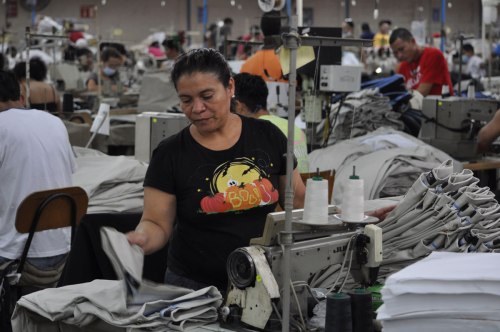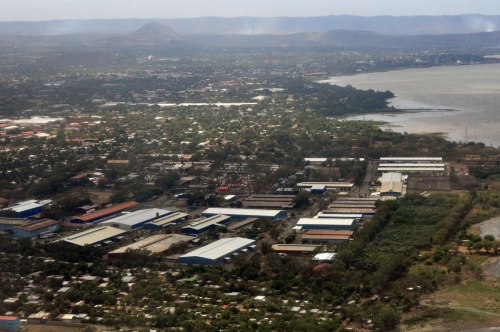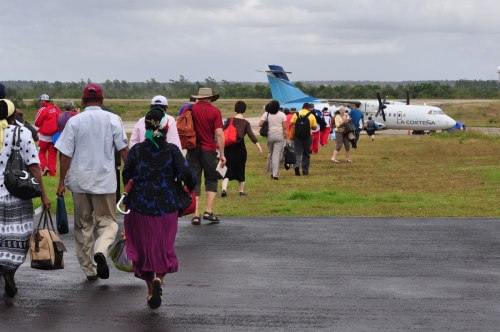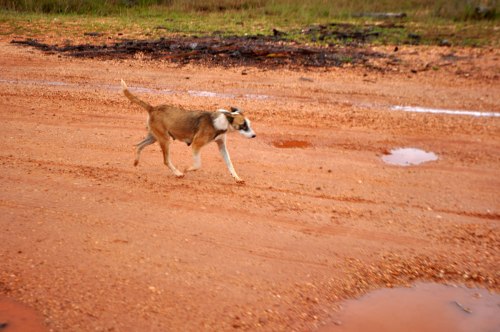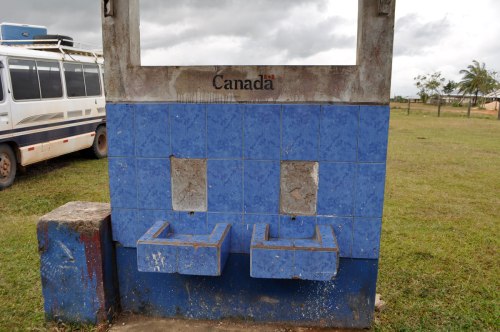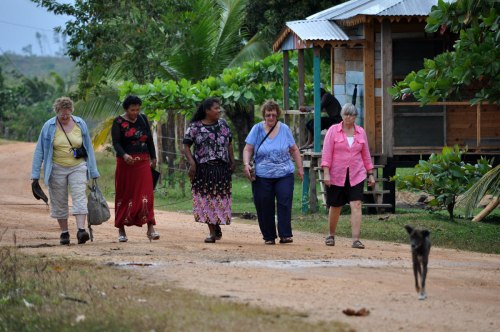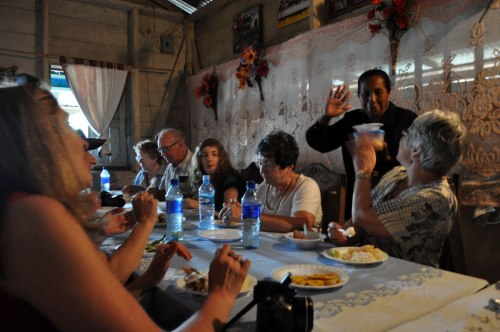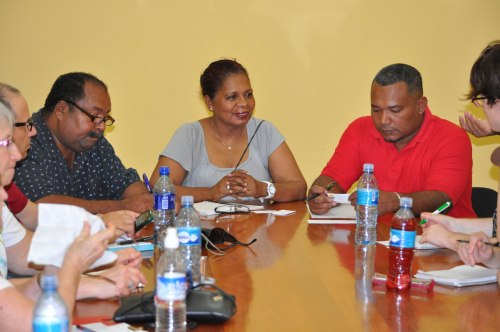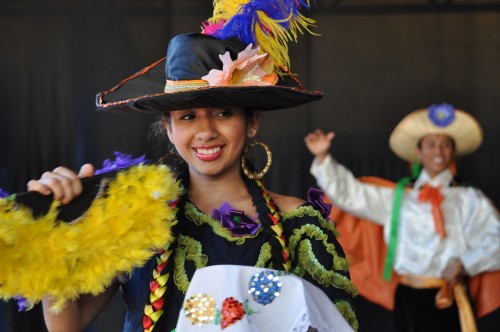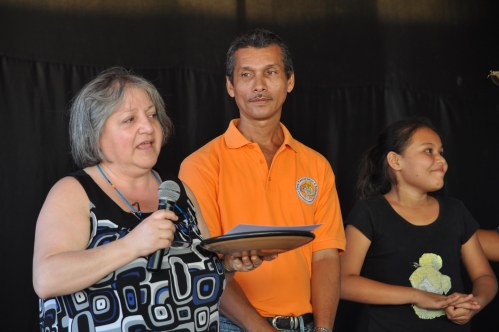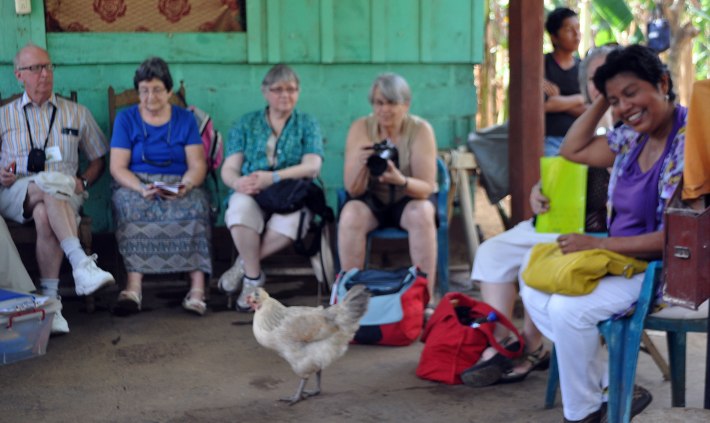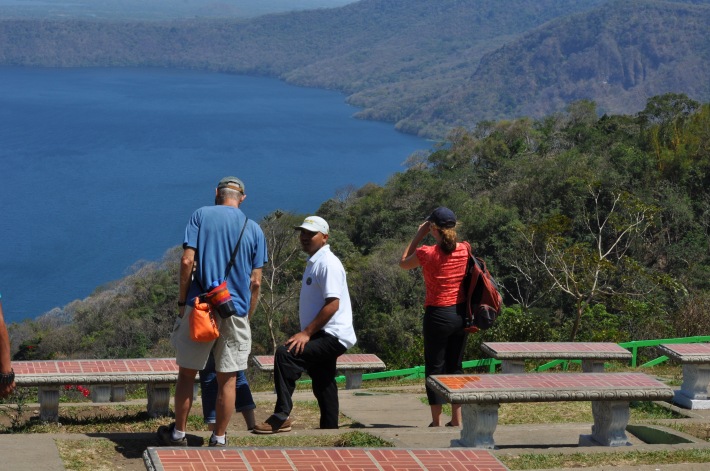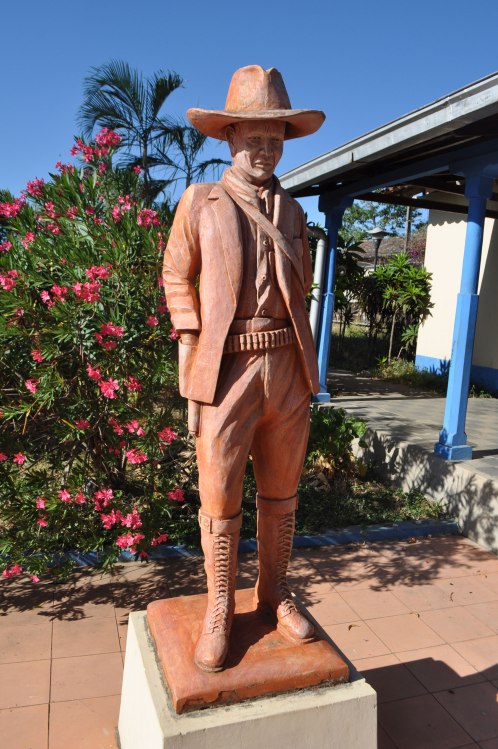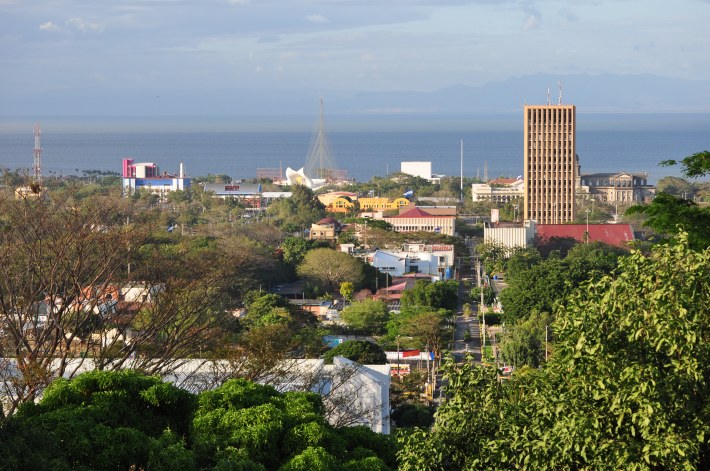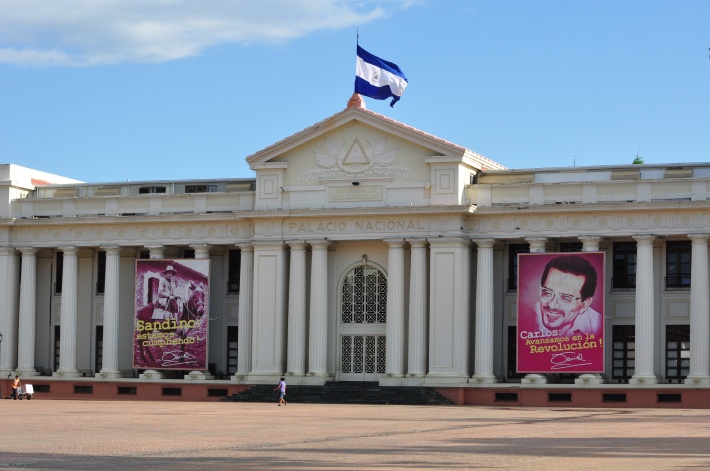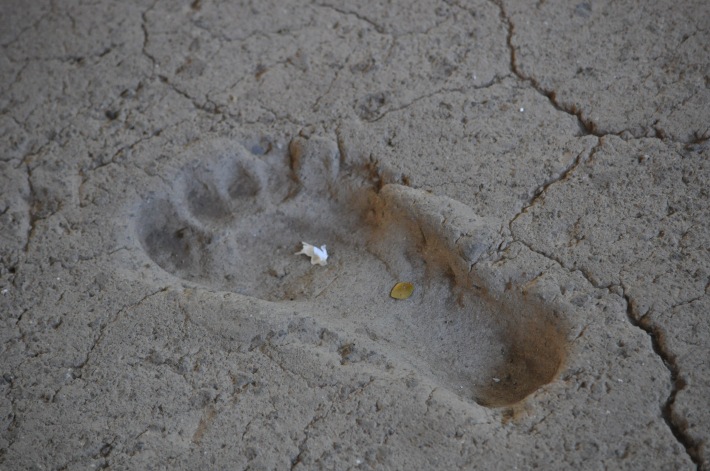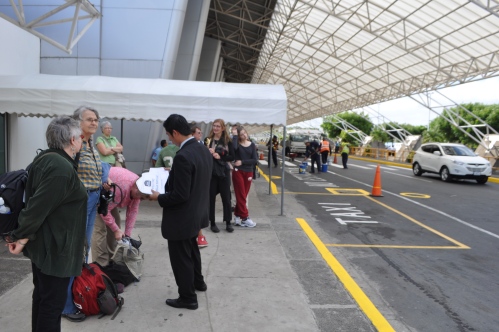MANAGUA – At 5:30 am the sun is rising over the Las Mercedes industrial park. The walkway into the park is long, at times multiple railings appear as if organizing queues for a theme park. On either side is a tall chain link fence, giving the appearance that those who come this way are being funnelled into the factories beyond. At the very end is a sentry post where workers' bags are inspected by guards before they head into the factories.
Along the walkway market stalls are being set up. It’s an instant mall for the workers, where they can buy anything from toilet paper to prescription drugs – no prescription required. The vendors know what their clientele will need over the course of the day.
We are here to hand out small booklets as part of a campaign organized by Maria Elena Cuadra, a women’s rights organization that is pushing for social change throughout Nicaragua. The booklets describe the contents of a new law about violence against women. This is significant in a country where violence against women, including rape, is not only commonplace, but deeply ingrained in the social culture.
The booklets were produced with funding from Oxfam and CIDA and have a little Canadian flag on the back.
The first few workers arrive and are happy to take the booklets. Soon it turns into a torrent as thousands of workers come down the walkway. We are prepared, the members of our delegation working with the women of MEC to get a booklet to everyone.
One man says he likes to hit women. Another man says he wants copies to give his friends and thinks the work MEC is doing is important.
The security guards do not hassle us, only asking that we shoot our video a little further away from the main gate. The new law is supported by the First Lady of Nicaragua, although the government appears to be doing little itself to advance the issue. The companies inside the gates are supportive and ask for their own copies.
MEC has loudspeakers at the entrance playing music in between ads promoting the campaign. The workers are well aware of who MEC are.
At 7 am it stops abruptly, that last few workers trickling into the zone. When we see the emptied walkway it’s evident that not a single worker discarded the booklet.
On the way back to our bus the music was still playing and a bus driver was dancing on the steps of his vehicle while finishing the last of his breakfast. All around are numerous buses that have brought the workers here.
The free trade zones were begun in Nicaragua to attract investment. In an age of savage capitalism, the government of the day felt it necessary to get into the game. Free trade zones do not play by the same labour rules as the rest of the economy. Today more than 100,000 Nicaraguans work in industrial parks like this for low pay and in often deplorable conditions. Most of these workers will start at 7 am and finish at 7 pm. Many will work longer than that if they have not met their production quota that day.
We are told that while the U.S.-owned factories are the best, it is the Korean factories that raise the ire of the workers. Women who have worked in these factories tell us of the difficulty in receiving the pay they are owed, in getting the factories to honour their state-legislated benefits, of monstrous working conditions including a limit of one visit to the toilet in a day. Another worker is assigned to time these toilet breaks. Some factories do not permit workers to move freely within the factory, insisting that they stay at their post for the full shift.
Later than morning we visit one of the better U.S. factories. The factory has been in existence for 12 years. For the past nine years the factory’s client has been Levis. Today the workers are making Dockers pants destined for the U.S. and Argentina.
It is unusual for us to be let inside one of these factories, but management here have had a good working relationship with both MEC and the local union.
Workers at the plant work from 7 am to 5:30 pm each day. They receive a 30-minute lunch and a morning break of 15-minutes. Minimum pay in this factory is $50 per week – which is high in the free trade zone. Minimum wage in the zone is $70 per month. An average family needs almost $500 a month to be able to afford the most basic of needs.
On top of the pay the factory employer is required to pay another 50 per cent towards the workers benefits – which includes setting aside enough money to pay a bonus of one-month’s pay in December. The government recognized that when workers are being paid less than subsistence wages, that the Christmas period puts extra pressure on them. While these are the rules, not every factory in the free trade zone obeys them. There is little interest shown by the government in enforcing them.
The co-founder of the factory tells us that he himself started out in a Korean factory and wanted to do better. Later we run into the general manager who is frank in telling us that he knows the pay is not sustaining. He says his factory at least takes workers “from misery to poverty.”
Treating workers better here, the plant itself is under pressure from other countries that have even lower standards. The company has already lost one client to Bangladesh. The manager says he would like to see an international minimum wage to stop this race to the bottom.
The workers say this is a particularly good factory because workers can go to the washroom whenever they need to, and there is no restrictions on their mobility on the shop floor.
There are 1700 workers in this factory the day we visit. At night there is another 1700 Nicaraguans who come for a second shift. The factory has to bus these workers home at the end of the shift because there is no public transit in Managua at that hour.
Our tour includes a trip to the medical clinic, of which the factory is quite proud. This employer will pay workers while they attend medical appointments, even if it is in the factory. The women of MEC say this has a downside – the company doctors and nurses are far less likely to give women sick time compared to doctors on the outside.
The company also pays wages while workers train. In general it takes 8-10 weeks to train a basic labourer. For more technical work it can take up to two to three years.
The MEC women tell us the Korean factories often turn over workers very quickly, sometimes firing them after three days and denying them pay.
Clearly for this factory, they see the workers as an investment and there are clear benefits to keeping them around.
There is also another reason to treat workers better – the company is subject to unannounced audits to maintain their status in the Better Work Program. Membership in the program is voluntary, but it makes the factory more attractive to companies that are worried about their corporate reputation. Growing public awareness of the Central American sweatshops is prompting some change in the free trade zone. We were told that Levis took some time before they could find a factory in Nicaragua that “they felt comfortable with.”
One of the managers says they need leadership in the factory, but they were trained as bosses.
During the tour of the factory floor we witnessed three workers taking material out of waste bags and transferring them to larger containers. All three workers were visually impaired. The company found it important to include employment for disabled workers.
After the factory we spent time at a mall that resembles any other in North America. The same brands, the same prices despite the much lower workers’ wages. Only the elite of Nicaraguan society can afford to shop here when a pair of pants can be as much as a month’s wages for a factory worker.
When we looked at the labels of the clothes in one department store, most were made in China, not Nicaragua.
Our final stop of the day was at the Managua offices of Maria Elena Cuadra. About 25 women and five men were waiting for us in the auditorium. For two hours they told us about their grievances in the factories and their pride in what MEC is achieving. They also wanted to know what we thought of the early morning distribution of booklets.
Present among the group were a number of journalists eager to interview Patricia Rebolledo from Horizons of Friendship. The last of the interviews took place aboard our bus as we waited to leave.
Nine days in Nicaragua we have seen how the global economy is impacting one of the poorest nations in the continent. It is here that we have seen capitalism’s savage face as it brutally exploits workers to offer us cheap goods in the aisles of our department stores. We have seen incredible degradation of the natural environment too. Every leader told us that climate change posed incredible risks to their nation.
We have also seen organizations like Maria Elena Cuadra, AMICA and youth of the Oscar Arnulfo Romero Community Centre do incredible things to bring about positive change to their society.
Seeing a broken fountain sponsored by the Canadian government in Santa Marta, it wasn’t hard to recognize that development is not about bricks and mortar, but working with the communities to build human capacity for the future. This is the work of Cobourg’s Horizons of Friendship. We are grateful to have been taken along on this trip and amazed at the difference a small NGO from rural Ontario is making not only in Nicaragua, but throughout Central America.


